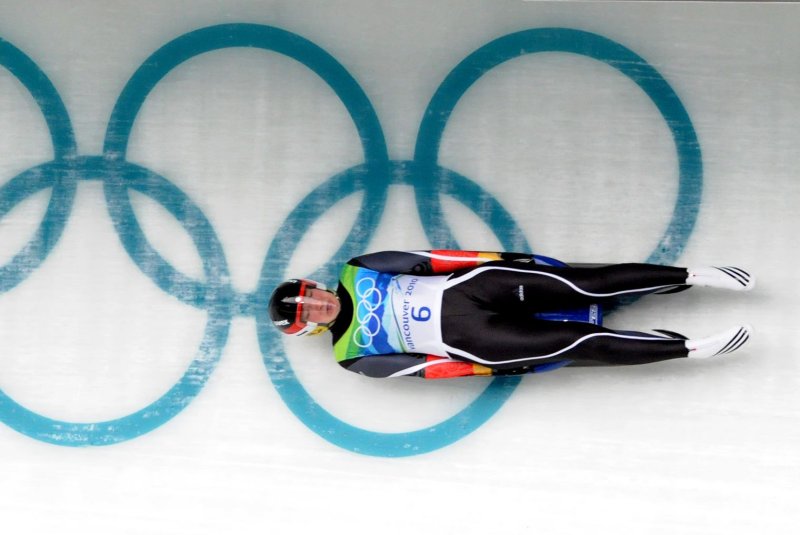Germany's Tatjana Huefner speeds down the luge track at the Whistler Sliding Center during her third run in the Women's Luge event at the Winter Olympics on February 16, 2010. Huefner won the gold medal in the event. Her teammate Natalie Geisenberger got the bronze while Austrian Nina Reithmayer won the silver medal. UPI/Pat Benic |
License Photo
SOCHI, Russia, Feb. 13 (UPI) -- Almost every Olympics new records are set. Athletes get bigger, faster and stronger -- jumper higher, fly farther. But athletes and pundits say the incremental technological improvements made every four years also make a difference.
"Back in the day, Olympics were more about amateur sport and everyone on the same level of equipment and everything, and I felt like the strongest was winning," Canadian speed skater Mathieu Giroux, who four years ago won gold with his Canadian teammates in Vancouver, told The Star.
"Now it may be a little less true. Technology can give you quite a big edge. If you have a bit more money, you can find better stuff," Giroux said. "In Formula One, there’s teams that have a lot more money and they win. It goes a bit like that now in the Olympics."
Sports manufacturing company Apogee designed the Canadians' suits, and the skin-tight wear was wind-tunnel-tested by engineers at the National Research Council.
The Americans, not unlike the Canadians and other highly competitive nations, take their sporting technology quite seriously. BMW has helped develop a faster, safer bobsled for the U.S. team. And Under Armour teamed up with defense contractor Lockheed Martin to design the U.S. body-hugging suits for skiing, luge, skating and other sports.
Of course, technological tinkering can always backfire. Concerned that their new suits had something to do with the U.S. speed skating team's so far lackluster performances, American officials were trying Thursday to get permission for skaters to revert back to the suits worn during last year's World Cup competition.
“If the entire U.S. team is underperforming compared to our potential--literally everyone--you can only look at so many factors," skater Brian Hansen told the Chicago Tribune. "Is it the suit? Is it our preparation?"
“There’s no way you’re going to get to the Olympics without technology," Kim Blair, apparel technologist and president of the International Sports Engineering Association, told CBS News. It’s in the equipment, it’s in the apparel design, it’s in the training science.”
New technologies have even been adopted in non-speed sports. In 2010, the Canadian curling team employed the services of Minnesota-based company BalancePlus, as well as the expertise of researchers at the University of Western Ontario, in order to design and build a more efficient ice brush.
The governing bodies of each sport enforce strict rules about equipment and athletic wear, but athletes say there's still room for technological tweaks here and there. And in sports where the difference between gold and silver can be one-thousandth of a second, even the smallest advantage can make a difference.
[The Star]
[NBC Olympics]
[Chicago Tribune]
[CBS News]















